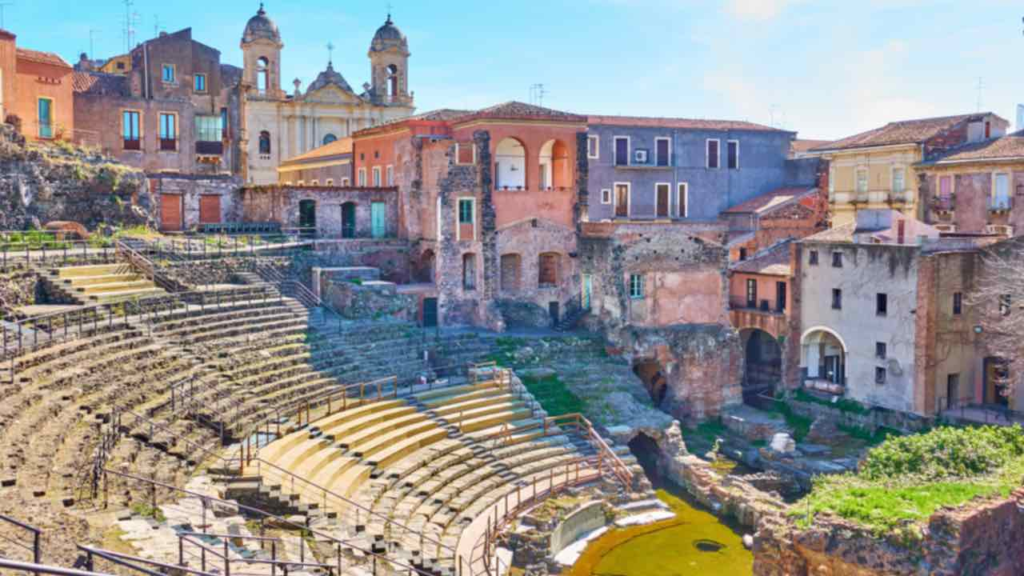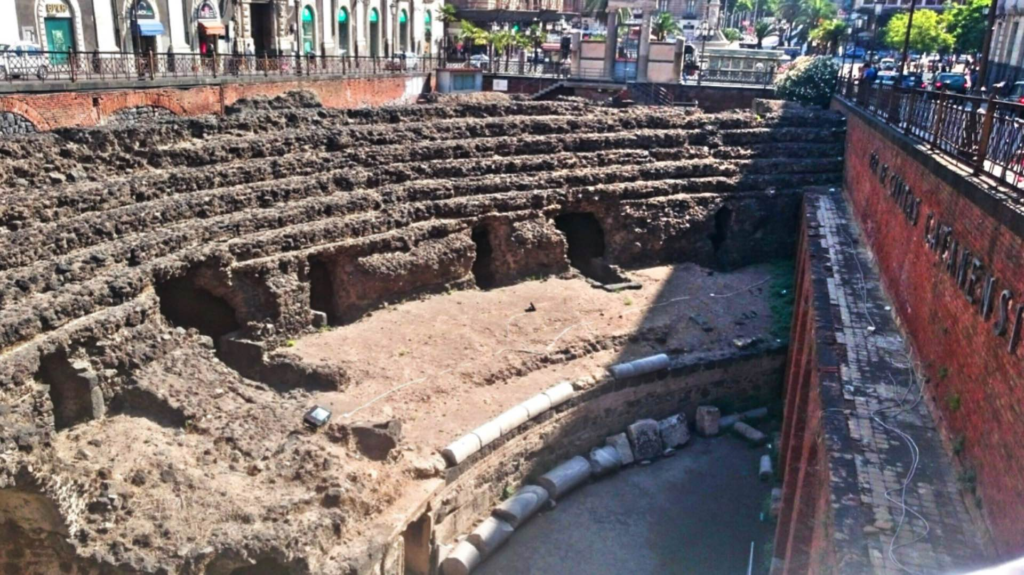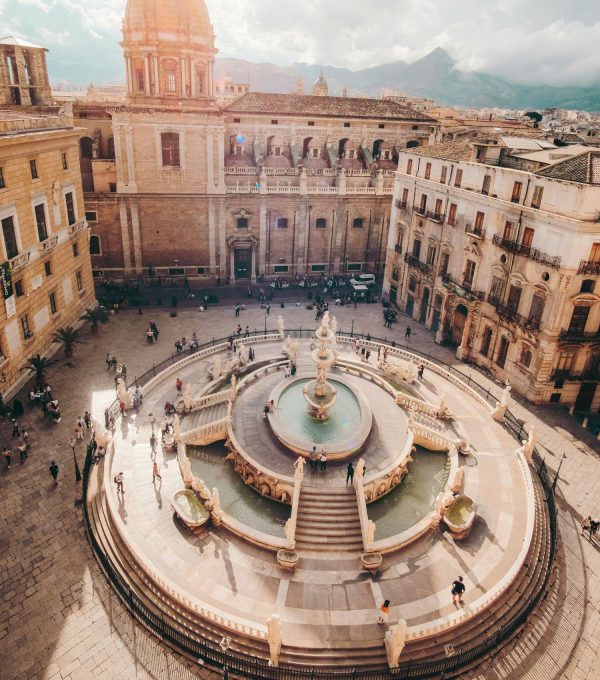Largely underground and enigmatic, an example of unparalleled archaeological wealth, the Black Colosseum is located in Sicily in the heart of Catania. Although little known compared to the most famous Colosseum in Rome and Arena di Verona, the Black Colosseum is one of the major Roman amphitheaters.
With a circumference of about three hundred meters, it is the second largest Roman monument after the Colosseum and is a unique example because it is made of lava stone and precious marble, a combination that gives a very special contrast.

parchiarcheologici
History of the Black Colosseum in Catania
The Black Colosseum was built in the second century A.D. near the necropolis. Various shows took place inside the monument, including fights between gladiators.
Today the remains of the structure are visible from Piazza Stesicoro but according to researchers most of the amphitheater is located underground.
During the third century the monument underwent some enlargement work, reaching its current size.
To trace a historical line of the Black Colosseum it is necessary to go back at least to 252 A.D. when, a violent eruption of Etna, risked to destroy the monument.
At the time, the people of Catania believed that the merit of the failure to demolish the amphitheater was Sant’Agata, who died the previous year. According to tradition it was the saint, who suffered martyrdom nearby, who with her veil stopped the lava.
After this event passed the years and the structure was gradually abandoned: in 1800 the area was now completely closed and so remained until, in 1904, the mayor Giuseppe De Felice entrusted the excavation and restoration of the monument to the architect Philadelphia Fichera.
After this first resumption of work, there were periods in which the monument was abandoned, alternating with returns of interest until the end of the nineties, when, at the end of the work, the structure was finally opened to the public in order to make excursions in safety.

nanopress
The Black Colosseum and its mysteries
The Black Colosseum is a monument shrouded in mystery, and if the alleged disappearance of a schoolgirl, an event that has no definite date but only some oral testimony that claims it is the period after the First World War is probably an urban legend it is likely that the origin of the mystery was born as a form of admonition for children, a sort of folk tale that people passed down from generation to generation to prevent their children from venturing into a dangerous place by its nature since its underground tunnels are largely unexplored.

leviedeitesori
The Black Colosseum today
In 2015, the CNR Institute for Archaeological and Monumental Heritage decided to carry out in-depth research on this archaeological site.
Thanks to the new advanced technologies, scholars and archaeologists were able to create a 3D reconstruction of the Black Colosseum to show how the monument actually looked in the imperial age.
These more modern studies have also brought to light the existence of an access to the structure from a hill in front, detail absolutely not negligible because it makes the amphitheater unique in all the Mediterranean.
According to experts, what we can see today is only the tip of an iceberg that hides, for the most part, in the underground of Catania, where it has been buried for too long.
Reason of interest for scholars and pride for all the population of Catania (and not only), in 2017 the Black Colosseum has obtained the recognition of the most visited monument in Italy: an adventure not to be missed during the next holiday in the beautiful Catania.
Copertina: parchiarcheologici



